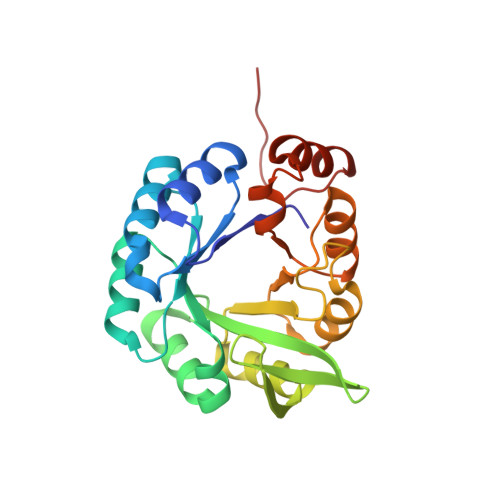Potential of fragment recombination for rational design of proteins.
Eisenbeis, S., Proffitt, W., Coles, M., Truffault, V., Shanmugaratnam, S., Meiler, J., Hocker, B.(2012) J Am Chem Soc 134: 4019-4022
- PubMed: 22329686
- DOI: https://doi.org/10.1021/ja211657k
- Primary Citation of Related Structures:
2LLE - PubMed Abstract:
It is hypothesized that protein domains evolved from smaller intrinsically stable subunits via combinatorial assembly. Illegitimate recombination of fragments that encode protein subunits could have quickly led to diversification of protein folds and their functionality. This evolutionary concept presents an attractive strategy to protein engineering, e.g., to create new scaffolds for enzyme design. We previously combined structurally similar parts from two ancient protein folds, the (βα)(8)-barrel and the flavodoxin-like fold. The resulting "hopeful monster" differed significantly from the intended (βα)(8)-barrel fold by an extra β-strand in the core. In this study, we ask what modifications are necessary to form the intended structure and what potential this approach has for the rational design of functional proteins. Guided by computational design, we optimized the interface between the fragments with five targeted mutations yielding a stable, monomeric protein whose predicted structure was verified experimentally. We further tested binding of a phosphorylated compound and detected that some affinity was already present due to an intact phosphate-binding site provided by one fragment. The affinity could be improved quickly to the level of natural proteins by introducing two additional mutations. The study illustrates the potential of recombining protein fragments with unique properties to design new and functional proteins, offering both a possible pathway of protein evolution and a protocol to rapidly engineer proteins for new applications.
Organizational Affiliation:
Max Planck Institute for Developmental Biology, Spemannstrasse 35, 72076 Tübingen, Germany.














